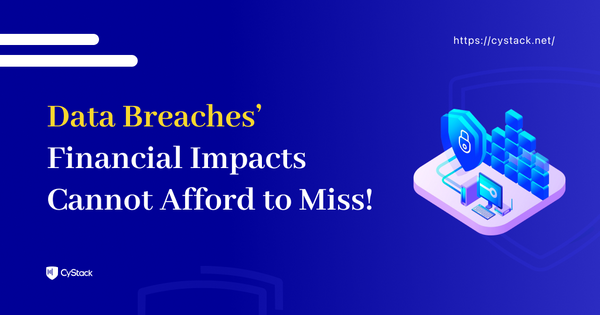
Data breaches happen more and more often. Below are the fresh insights into this problem provided by IBM in 2022:
- 83% of more than 3,600 organizations experienced at least one data breach.
- The global average cost of a data breach increased by 2.6% from 2021, reaching USD 4.35 million. Meanwhile, the United States had the highest average cost per breach – around USD 9.44 million.
- The financial impacts of data breaches led 60% of organizations to increase the prices passed to their customers!
Such alarming statistics about data breaches and their costs put any business under great and close attention! So let’s follow us to learn more about data breaches.
What Is A Data Breach?

A data breach is an attempt to view, copy, steal, or transmit sensitive and confidential data. Or it also includes data spill, information leak, information leakage, and unintended information disclosure.
Examples of data breaches are, but are not limited to:
Human errors
“To Err Is Human.”
Human errors have caused 21% of data breaches in organizations. For instance, negligent employees might reveal data unintentionally, and the data is fallen prey to bad actors.
Malicious insiders
Malicious insiders are those working in organizations that maliciously and intentionally breach information for personal or financial incentives. This type of crime is even more complicated to prevent than those from the outside.
Physical Thefts
Many organizations now invest significantly in cybersecurity as they think physical thefts are a thing of the past. In fact, physical and cyber data breaches are equal concerns.
Thieves can steal information from physical records and files on the organization’s premises.
Ransomware
Ransomware means infecting organizations with malware. The ware then worms through systems to encrypt data and halt operations. Victims have to pay to get the decryption key.
Phishing
Attackers send emails that look incredibly genuine yet contain a phishing link. You might be asked to provide personal or business-related information and a password when you click on the link.
Financial Impacts Of The Data Breaches

Data breaches are significantly costly – millions of dollars on average. Why?
First is the cost of identifying the issue. On average, it takes around 207 days for the organization to identify the breach and another 73 days to contain it (IBM report.) Since the numbers are average, data breaches can cost significantly more in some cases. Time is money, then.
The second is the cost of fixing the issue. For example, many organizations have to pay a ransom for their data back, whether they want it or not. Others even have to pay for legal personalities, lawsuit fees, or data insurance to stakeholders affected by the breach. The cost also involves human resources to fix systems and enhance vulnerabilities to prevent future violations.
Unfortunately, the impacts are not just the monetary fixing costs. Businesses can lose sales due to system downtime caused by malware.
The worst consequence must be a negative attitude towards the brand. Data breaches leave terrible reputational damage, causing your customers to lose their trust and go to rivals.
Best Practices: How to Protect Your Business Against Data Breaches?

A data breach might make your budget and profits out of whack. Thus, you have to apply best security practices to reduce the chances of breaches and minimize their financial impacts, if any.
Employ a zero-trust security architecture
A zero-trust security model applies a principle: “Never trust, always verify,” meaning that businesses need to validate every interaction with the systems continuously.
So far, just over 40% of businesses implement this approach, and they expect to save around 1.5 million dollars once the architecture maturely develops.
Secure business data in cloud environments
Since businesses’ data grows fast and valuable, it is vital to protect them. We suggest using cloud-based environments since they have a secure data classification schema.
In the past, businesses saved 720 thousand dollars using mature cloud practices.
Adopt security SOAR and XDR tools
SOAR and XDR are security platforms built to improve breach detection and accelerate response time using AI and automation.
Companies using these tools have shortened the lifecycle of breaches by 29 days compared to the above average. Such a faster response helps reduce the cost and other financial impacts.
Closely monitor endpoints and remote departments.
As human errors and malware insiders are the two common types of data breaches, businesses had better keep an eye on the actions of their employees, mainly when they work remotely.
Some tools such as endpoint detection and response (EDR), Unified endpoint management (UEM), or identity and access management (IAM) are beneficial.
Build playbooks to respond to incidents quickly
Big companies often have an Incident Response (IR) team to regularly test their products/services and prepare cyber incident guidance to contain the fallout of a data breach quickly.
Wrapping Up
Data breaches are hardly avoidable. Thus, every business must be better safe than sorry by applying the best practices and planning for the Incident Response as soon as possible!
 4 minutes read
4 minutes read
